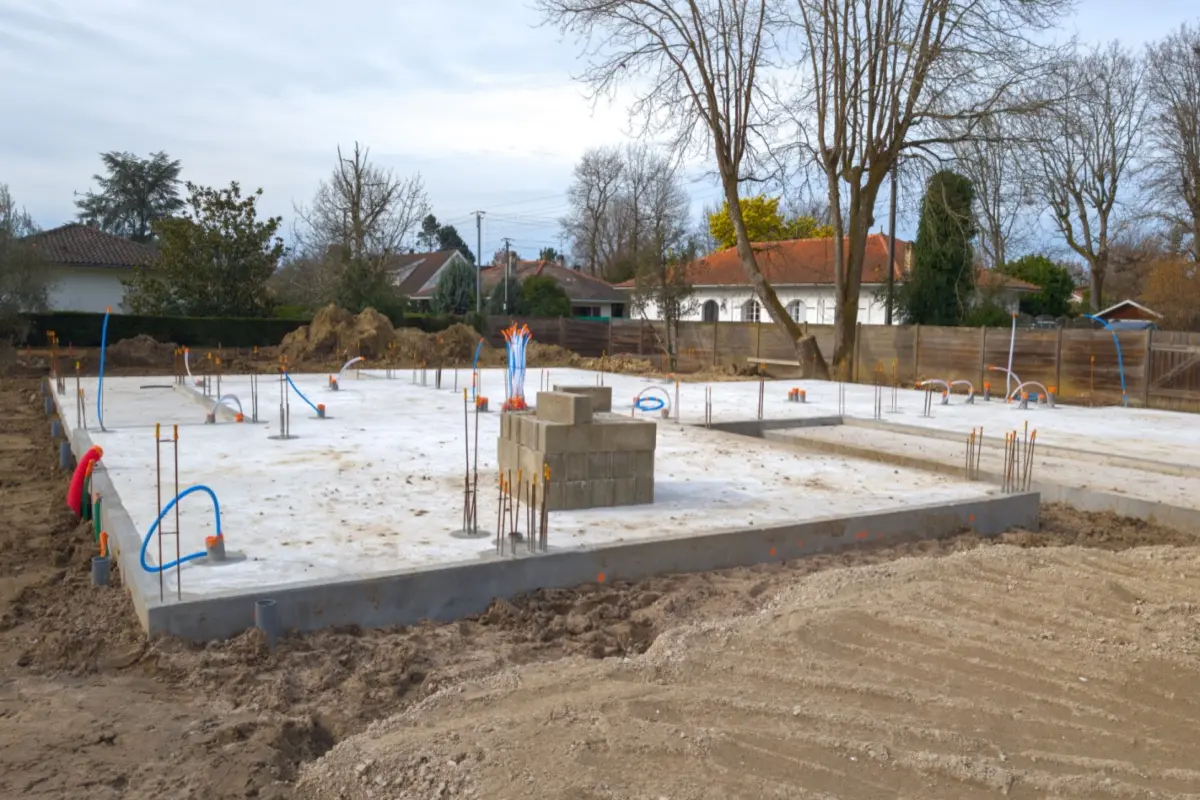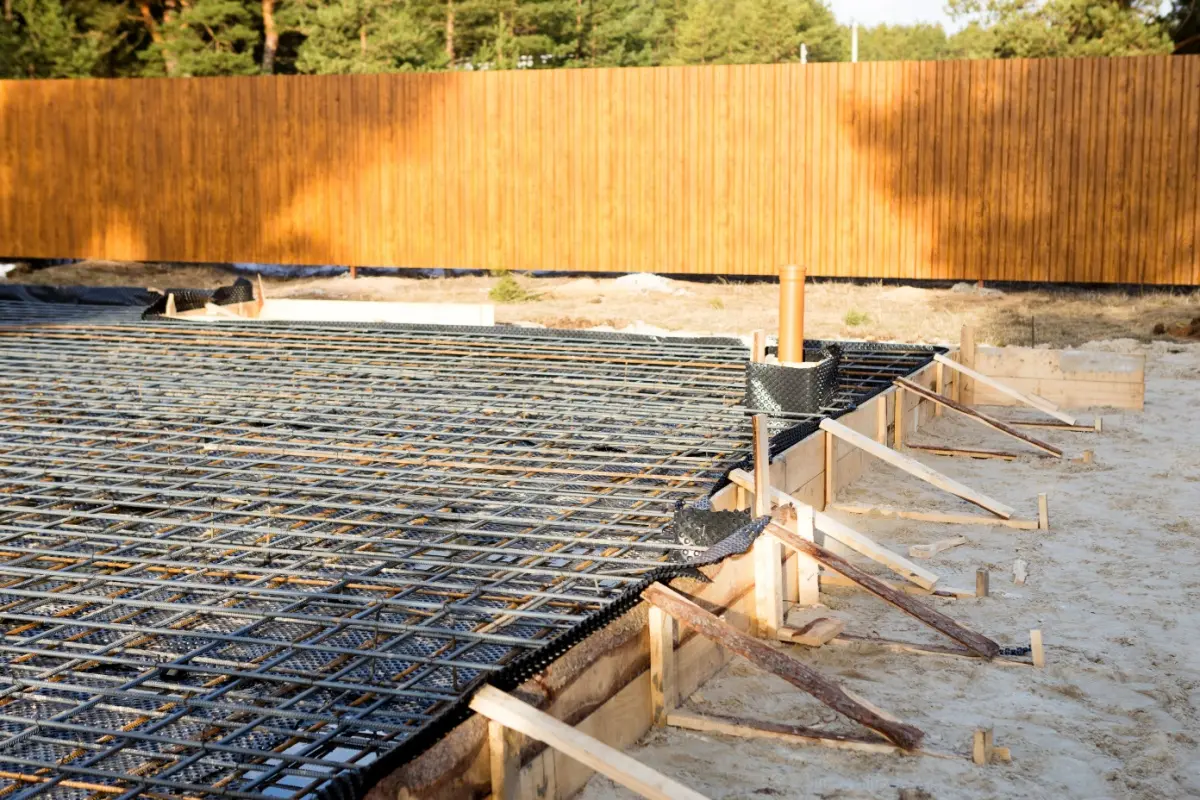Whether laying a new patio, crafting a garage floor, or building a shed foundation, pouring a concrete slab is one of the most cost-effective ways to add durability and value to your home. But before you break ground, it pays to know what drives your concrete slab cost.
In this guide, we’ll walk you through key factors impacting the price of concrete slab projects, so you can budget confidently and avoid unexpected expenses.
Most homeowners pay between $3,600 and $7,200 for a typical concrete slab project, but your specific price will depend on the slab’s size and purpose.

For example, a small 10×10 ft. pad might cost only a few hundred dollars, whereas a large 2,000 sq. ft. foundation slab can run well over $30,000.
Concrete slabs are often sold by project or by square footage. Here are some common slab sizes and their estimated total installation costs:
10×10 slab (100 sq. ft.): $600–$1,200
12×12 slab (144 sq. ft.): $860–$1,700
20×20 slab (400 sq. ft.): $2,400–$4,800
30×30 slab (900 sq. ft.): $5,400–$10,800
These estimates include materials and labor, and are based on a standard 4-inch thick, unreinforced slab. Actual prices will fluctuate based on concrete thickness and any special requirements.
Another way to budget is by square footage. On average, a concrete slab costs $6 to $8 per square foot, including installation. In other words, a 200 sq. ft. slab would cost around $1,200 in many areas. Most concrete slab projects cost between $4 and $10 per square foot, covering basic to moderately reinforced slabs. Highly reinforced or decorative concrete can cost even more.
The concrete slab price per square foot can differ from a garage floor to a patio because of different thickness or reinforcement needs. Below are typical concrete slab prices for common project types:
A standard two-car garage typically requires a concrete slab around 20×20 to 24×24 (approximately 400–576 sq. ft.). A slab this size usually costs between $2,500 and $7,000, including installation.
That works out to roughly $6 per sq. ft. on average for a basic garage floor. Garage slabs are often 4 to 6 inches thick and reinforced with steel rebar, which is why the cost to pour a concrete slab for a garage is a bit higher than for a simple patio.
Concrete patios or outdoor living areas are often thinner and less reinforced than garage slabs. A typical backyard patio might be 10×20 (200 sq. ft.) or 20×20 (400 sq. ft.). A concrete slab patio costs between $1,000 to $6,000, depending on size and finish.
This equates to roughly $5 to $15 per sq. ft. for most patios. Using a basic broom finish keeps costs low, while larger patios or those with decorative finishes cost more.
For a small shed or playhouse, you might pour a simple concrete pad of 10×10 to 12×16 (around 100–200 sq. ft.). These small slabs are usually 4 inches thick and don’t always require reinforcement.
The cost for a concrete pad this size is typically $600 to $2,000, making it an affordable project for homeowners. Even a larger shed base up to 20×20 (400 sq. ft.) will generally remain under $4,000 in most cases.
Building a foundation for an entire house is the most expensive concrete slab project. These slabs cover a large area (often 1,000–2,000+ sq. ft.) and must be thicker (typically six inches) with heavy reinforcement and proper footings at the edges. A slab-on-grade house foundation costs roughly $10,000 to $30,000 or more.
In terms of square footage, that’s approximately $6 to $15 per square foot. Slab foundations are often cheaper than basement foundations, but require soil preparation to ensure longevity.
Multiple variables determine the final cost of your concrete project. Understanding these factors can help you plan accordingly and control your total cost to lay a concrete slab. The four primary considerations are:

The thickness of the slab is a significant cost driver. Thicker slabs require more concrete mix and often extra labor. A standard residential slab is 4 inches thick. If you increase to a 6-inch slab (often used for garages or foundations), you use 50% more concrete by volume.
That can add roughly $1 more per square foot to your concrete slab cost. Thicker slabs are stronger and last longer, but you should only pour as thick as the project demands.
Not all concrete is the same. Basic concrete (around 3,000 PSI strength) is the most affordable. If you need high-strength concrete or special additives (fiber mesh, air entrainment for cold climates, etc.), the material cost will go up.
Reinforcing the slab with rebar or wire mesh also adds to the budget. Additionally, the surface finish matters: A simple trowel or broom finish is cheapest, whereas decorative stamping, staining, or polishing can raise the price significantly. Decorative concrete finishes might add $2 to $10+ per sq. ft. on top of the base cost.
Proper ground preparation ensures the slab won’t crack or shift due to soft spots or poor drainage. If your ground is uneven or has grass/topsoil, contractors must excavate, level, and compact the area before pouring.
This work can add to your bill. In some cases, grading and soil compaction might cost $0.50 to $2.00 per square foot, especially if a lot of soil needs to be moved. For a small patio, that could mean a few hundred dollars for preparation.
In areas with higher wages or a shortage of concrete professionals, you’ll pay more in labor per hour. Labor typically accounts for about 40% of the total cost of a concrete slab project, though this depends on the location. Labor can account for up to 60% of the total in high-cost regions.
For example, a contractor might charge around $2 to $3 per sq. ft. for labor, which is included in a $6 per sq. ft. slab price.
Don’t forget building permits if required in your area, especially for garages or home additions. Permit fees are usually a few hundred dollars or less.
Beyond the basics, here are some extra features and upgrades that can drive up the cost of pouring a concrete pad:
Here are some tips to keep in mind when pouring concrete:
Intricate shapes or elaborate finishes can double the cost. Stick with a basic shape and a simple broom or trowel finish. Avoiding curves and custom patterns will minimize labor and formwork expenses.
Use the slab thickness and concrete strength that your project requires. A patio or shed typically doesn’t need a 6-inch, rebar-reinforced slab like a garage does. By not overbuilding — for example, using a basic 4-inch slab for light loads — you save on material costs without compromising on what you need.
Handling the site preparation (clearing and grading the area) or building the wooden forms for the slab can reduce the labor hours you pay for. If you have experience, doing the final concrete finishing yourself will also save on contractor time.
Compare estimates from several licensed concrete contractors. Be sure each quote uses the exact specifications (slab size, thickness, reinforcement) so you can make a fair comparison. Don’t hesitate to negotiate or ask if using a different mix or finish could save money.
If your project is small, be mindful of minimum load fees from ready-mix suppliers. It might be cost-effective to schedule multiple small concrete projects together — for example, a patio and a walkway — so one truck delivery can cover both.
Remember that labor typically makes up around half of the total concrete slab expense. You can cut a portion of the cost by reducing the hours a crew needs to work through DIY prep or limiting complex features.
With a handle on slab thickness, material choices, site prep, and labor rates, you’re ready to compare bids like a pro. On top of utilizing these cost-effective strategies, you might consider working with a contractor who offers financing options. Instead of tackling your concrete project’s cost as a lump sum, this option allows you to make affordable payments for your concrete slab project over time.
Still got questions about your upcoming project? Chances are we will answer them below!
A basic concrete slab usually costs less than a paver patio and slightly more than an asphalt driveway of comparable size. For detailed cost comparisons and payment options, visit Renovate’s concrete work financing page.
Experienced homeowners sometimes pour their own shed pads or small patios. However, larger projects or slabs that need to support a structure are best left to professionals. Mistakes in mixing, grading, or finishing concrete can be difficult to correct.
When properly installed, a concrete slab can last 50 years or more without major issues. Routine maintenance (like sealing cracks and ensuring proper drainage) helps maximize its lifespan. Over the decades, minor cracking is normal, but a well-built slab shouldn’t need replacement for many decades.